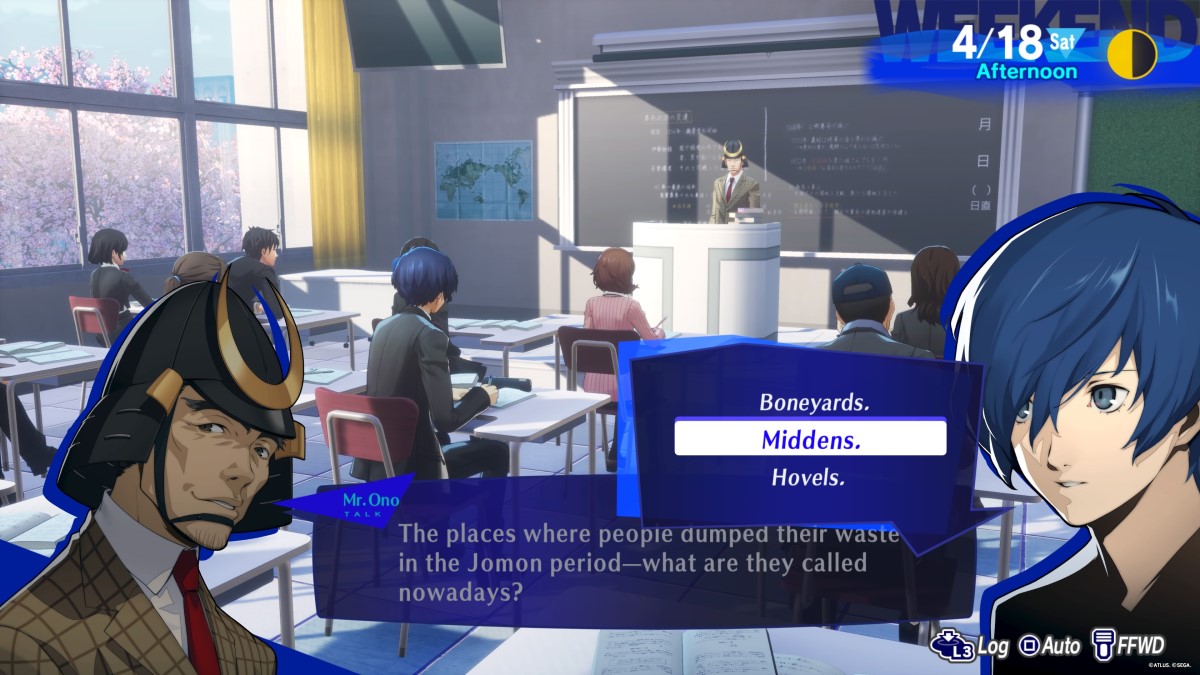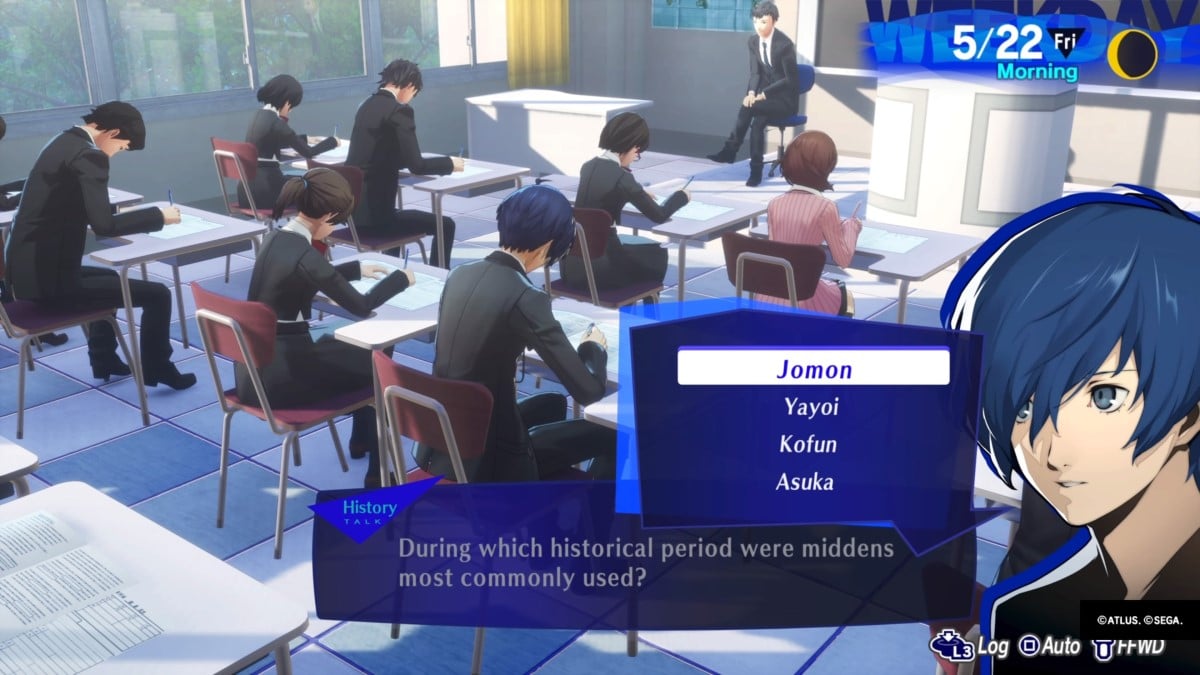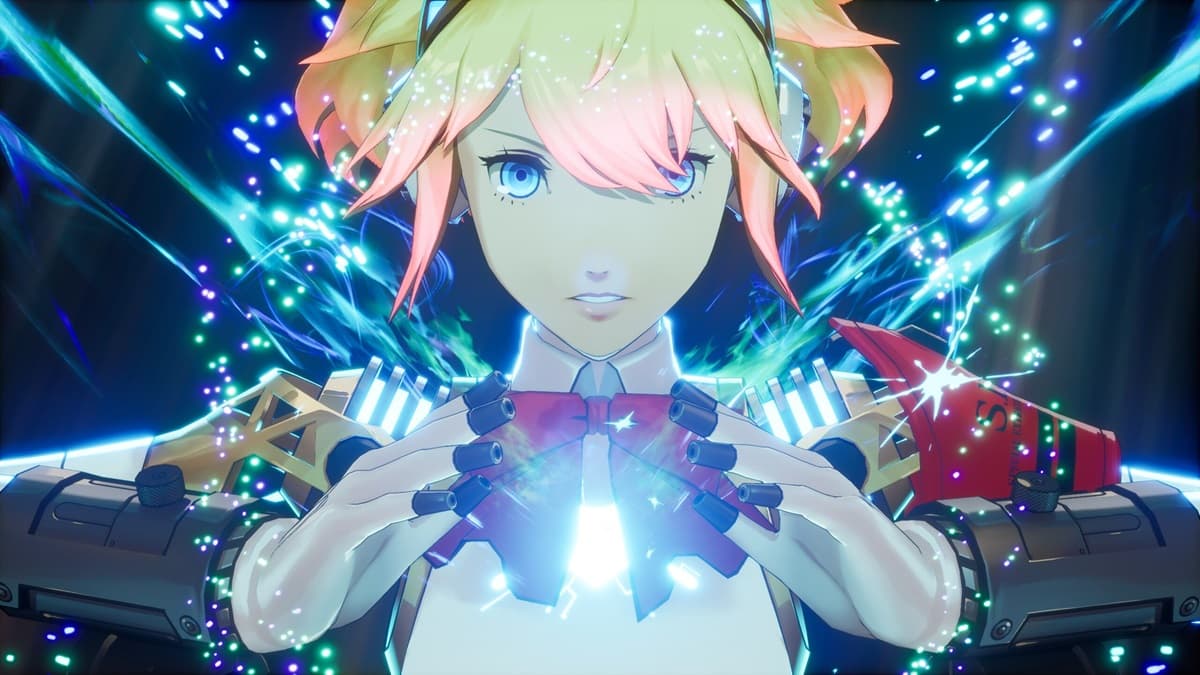The school questions in Persona games are notoriously tough, and Persona 3 Reload is no exception. On 4/18, samurai-obsessed history teacher Mr. Ono hits you with a tough question about the Jomon period. How are you supposed to know what Jomon waste disposal places are called?
While for the very first question, on 4/8 (not long after the opening song has finished playing), Ms. Toriumi gives you the answer before asking the question, Mr. Ono gives you no prep at all. The training wheels are well and truly off and, unless you happen to know a lot about Japanese history, it’s time to chea—to enhance your learning experience with the help of the internet.
What are the places where people dumped their waste in the Jomon period called nowadays?


The long-winded Mr. Ono’s exact wording is: “The places where people dumped their waste in the Jomon period—what are they called nowadays?” And you have a choice of three possible answers: Boneyards, Middens, or Hovels. Honestly, I had no idea, and probably would have guessed Hovels if the internet hadn’t been an option. Even then, the answer wasn’t easy to find, as this is a very, very specific question.
I got there in the end, though. And the answer is Middens. Yes, nowadays, the places where people dumped their waste in the Jomon period are called middens. Otherwise known as “shell heaps,” middens are not exclusive to Japan, and are a common feature of archaeological sites around the world.
Basically, for thousands of years, people used to heap all their crap together near their villages, and those sites are now archaeological gold mines. This included human waste, mollusk shells, animal carcasses, and botanical material. Archeologists used these materials to study what old human settlements used to do and what kind of diet they used to keep.
During which historical period were middens most commonly used?


If you get Mr. Ono’s question right in class, you’ll earn the respect of your classmates and a +1 boost to your Charm social stat. But don’t worry if you do get it wrong, as you’ll get the chance to redeem yourself once the midterm exams roll around. The history exam is on the morning of Friday 5/22, and you’ll once again have to demonstrate your in-depth knowledge of prehistoric human waste.
This time, the question is reversed, so you’ll be asked, “During which historical period were middens most commonly used?” And can choose between four possible answers: Jomon, Yayoi, Kofun, Asuka. Middens were, of course, most commonly used during the Jomon period, so the answer is Jomon. Choose Jomon, and you’ll be well on your way to the top of the class. This time, you won’t get a boost for your social stat, at least until you get your midterm score at the end of the week.
After the midterms, you can speak to Mitsuru and get more items based on your score, including:
- Guard Increase I
- Speed Increase I
- Magic Increase I
- Power Increase I
- Proto-Choker
Keep in mind that you can only get the Proto-Choker if you get the highest score, which is only possible if your Academics stat is at least level 3.












Published: Feb 14, 2024 04:00 am